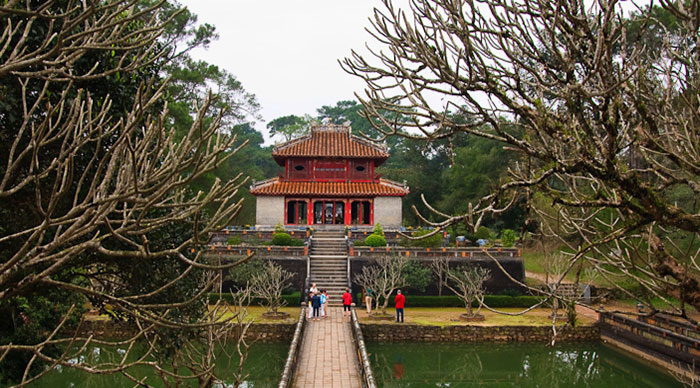
Minh Mang Mausoleum - An architectural jewel of Hue
- on Oct 3, 2019 By: Ngoc Nguyen
When talking about the most majestic mausoleum of emperors in Hue, many people think of Minh Mang for its sublime architecture and scenic natural setting.
The second Emperor of the Nguyen Dynasty, Minh Mang is the son of Emperor Gia Long. Upon his father’s death in 1820, Minh Mang became emperor and began to build many palaces inside the imperial city and the Forbidden Purple City in Hue. Minh Mang distinguished himself by his erudition and was known to be an ultra-Confucian and anti-Western ruler who launched an intolerant religious policy towards Christians. He himself drew up the plans for his tomb but died at the age of 50 of a fall from his horse before construction could begin (1840-1843). It is then the only tomb to be built after the death of a sovereign.
The sublime architecture of the Minh Mang Tomb
This mausoleum located outside the city on Mount Cam Ke, 12 km from Hue, consists of an architectural ensemble forming 40 monuments like palaces, pavilions, temples, and more. In a romantic space surrounded by mountains and rivers, the mausoleum is a creation of beauty sleeping in a forest. The head seems to rest on Kim Phung's mountain as the legs extend to the confluence of the rivers. According to imperial tradition, the choice of this location could depend on the future and the happiness of the dynasty. The 40 beautiful monuments are arranged symmetrically on three parallel axis’s that are perpendicular to the Than Dao alley in the centre to the foot of La Thanh wall, a brick wall 3m high and 50cm thick. Built on an axis of 700m long, all buildings occupy no less than 28ha, delimited by an ellipse of 1750m. The Minh Mang Mausoleum, undoubtedly the most beautiful of all, is in total harmony with nature with its water features, fountains, adjoining gardens and pine forest.
Visit the Minh Mang Mausoleum
The entry gate Dai Hong Mon
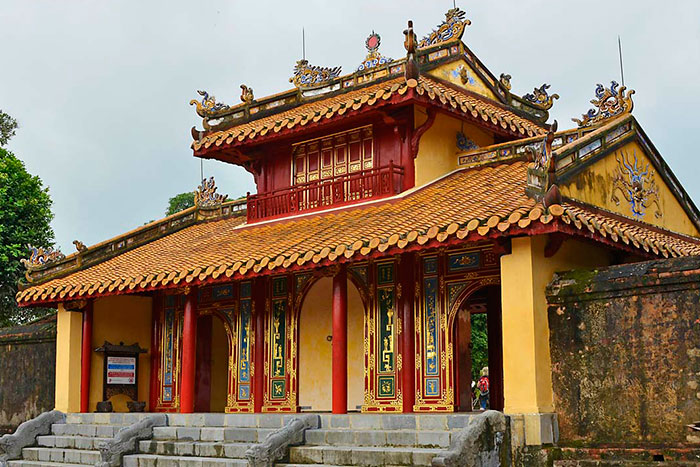
On the plaza or main courtyard leading to the three-door entrance gate, we can admire the traditional statues of civil and military mandarins and elephants and horses of unquestionable beauty standing in front of the tomb, which decorate the entrance of all the royal tombs.
The pavilion of the Stele
Three granite staircases, one central and two lateral, are then erected and edged with ramps of dragons. These very high steps allowed those who had an audience with the sovereign to reflect on what they were about to say to the king. There are two superimposed terraces where there is a square pavilion, Bi Dinh, which houses a stele, black marble engraved in Chinese and composed by his son Thieu Tri, whose function was to transmit to posterity the virtues, merits and the holiness of his deceased father.
The door of enlightened virtue

This gives access to a second main courtyard with a belvedere so that the king could admire the relaxing landscape. After crossing one of the three bridges that cross Trung Minh Ho Lake (Crystal clarity Lake), we enter the Pavilion of Clarity - Minh Lau on the side of Mount Tam Dai Son. Made entirely of marble, the central bridge Cau Trung Dao was reserved for the exclusive use of the emperor.
The Minh Lau Pavilion
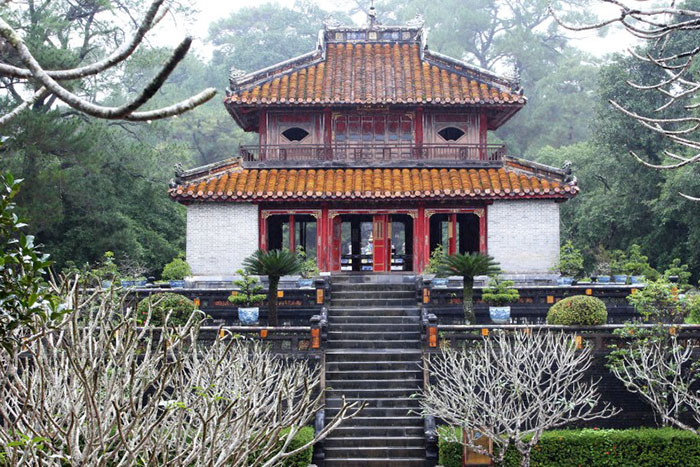
This square-shaped monument, with a floor surmounted by an octagonal roof, is perched on three terraces, symbolizing the "three powers": the sky, the earth and the water. On the left, there is the Pavilion of Fresh Air and, on the right, the Pavilion of Fishing. After having crossed the Tan Nguyet lake which separates the world from the living and the dead, one enters the sacred compound, where the resting place of the king is.
The sacred compound
You must cross the bridges of Intelligence and Righteousness, spanning Tan Nguyet lake, then climb 33 stone steps, to arrive at the funerary tomb of the king in the center of Khai Trach Son hill. But the grave is protected by the "precious wall" symbolizing the sun that makes it inaccessible to visitors. The big door was opened only once to allow passage to the royal coffin. Since then, it has been permanently closed.
How to get to the Minh Mang Tomb?
The Mausoleum of Emperor Minh Mang is located 12 kilometres from Hue on the west bank of the Perfume River in a quite sublime natural corner. There are several ways available for you to discover it:
Related articles:
>> Hue Imperial city - A to Z Travel guide
>> Hue royal meal, exceptional heritage of Vietnamese cuisine
 Español
Español Français
Français







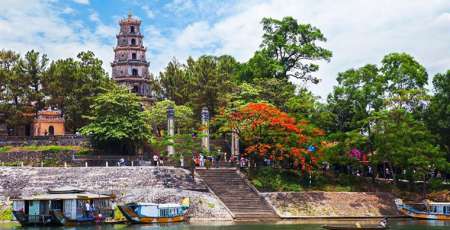
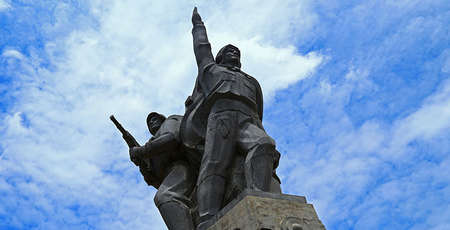
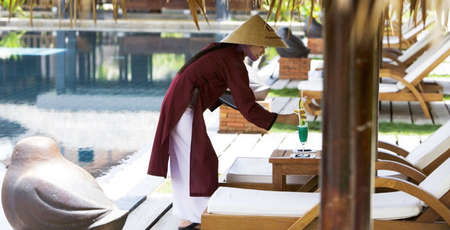
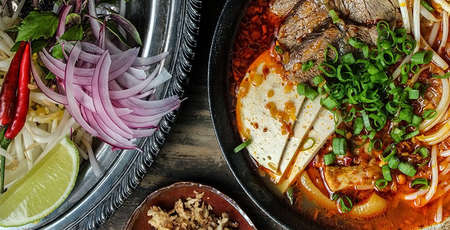
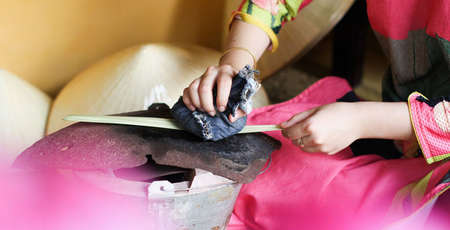
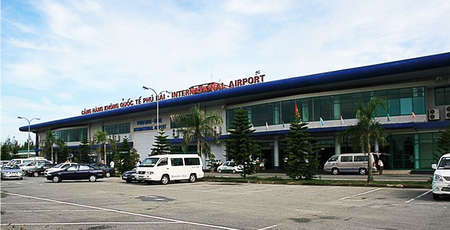







HerbertPhomaMS
on Oct 19, 2025Lilyan Cuttler
on Oct 15, 2025Avenue17XC
on Sep 14, 2025Avenue18JL
on Jul 21, 2025Judi Haigh-Smith
on Jun 29, 2025